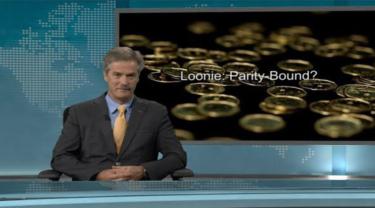Uh-oh, it’s taking off again. Our dollar got restless last week, and it’s catching. Its nascent liftoff has filled the airwaves with ‘loonie logic’, of varied sorts. At the same time, exporters have legitimate fears of a march back to the ‘parity-plus’ zone. After all, only three years ago, we were there – and very few, if any, foresaw its tumble from those heights. The recent jump felt a lot like one of those reversals that kicks off a steady march to a radical new level. Is it? Where is the Canuck buck headed?
For perspective, let’s take a brief walk through its recent big movements. In the past 10 years, most of the action occurred in parallel with commodity price movements. Pre-recession, the move to parity was fueled first by an up-shift in oil prices, then further cemented by rising base metal and other commodity prices. Recession crushed commodity prices by late 2008, and the loonie followed suit, plummeting from parity to the high-70-cent (US) level. In about a year, it was back to parity. Planet-wide government spending programs, followed by extraordinary monetary measures, helped to vault commodity prices back to previous heights despite sluggish overall growth, and, you guessed it, the loonie was back on its parity perch. Growth started to return in 2014, and the stimulus was gently rolled back. That was enough to bring commodity prices back to earth, and with it, a mid-70-cent Canadian dollar.
That creates a bit of a problem for the recent movement. It has come at a time when commodity prices, up from cyclical lows about 18 months ago, remain bound in a particularly low range. The high-price years attracted a lot of resource investment, and the world is now awash in surplus supply. Most analysts don’t expect much more than modest upward movement in the medium term period, so currency markets are not pricing in much upward movement on the expected future path of commodity prices. To get to parity via this route, we’d have to see oil prices back in triple digits, and they’re currently only half-way to $100. Base metals would also have to surge; that’s not likely without a radical upshift in global growth.
One key currency driver has sat backstage over this very dramatic episode. Interest rates – both in Canada and the US – hit extraordinary lows in the wake of the recession. Outside of the very occasional 25 basis-point move, in the five years following the Great Recession rates were hardly headline-grabbing stories. As the Fed started messaging and then actioning an unwind of quantitative easing, suddenly monetary policy was all the rage. Stateside, that is. Canada’s weakened domestic economy suggested a rare decoupling of monetary policy, with no rate hikes on the near-term horizon. This wedge was then priced into the currency, adding to the weakness brought on by the commodity price freefall.
All that changed with the Bank of Canada’s decision two weeks ago to begin tightening the monetary screws north of the border. The move was broadly unanticipated – markets did a six-week about-face as it dawned on them that the Bank’s countenance had changed. The speed of the shift in messaging followed by the recent rate action fired up the imaginations of traders, and the loonie zoomed northward. Forecasts that called for something around 74 cents US quickly moved to 80 cents, following the actual 2-3-day trail blazed by the Canadian buck.
That’s a pretty long leap in just a few days; what does it mean? Our currency model suggests that it takes a 100 basis-point change in the Canada-US 90-day Treasury bill differential to generate a 3-cent swing in the currency. The recent currency move was double that, and holding other drivers constant, that would suggest that markets foresee a 200 basis-point swing. By all counts, that’s a wild overshoot in expectations. If so, parity is an impossibly long way off. The only remaining element is the US dollar itself. Is it melting down? Political stalemate seems to have stoked a moderate loss of confidence. But given that economy’s underlying strength, that ebb is not likely to last.
The bottom line?
Canada’s currency drivers suggest that parity is a long way off. It would take monster movements in interest rates, commodity prices and the trade-weighted value of the US dollar to get anywhere close. It is where it’s going to be for a good while.





